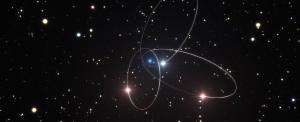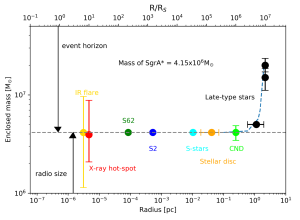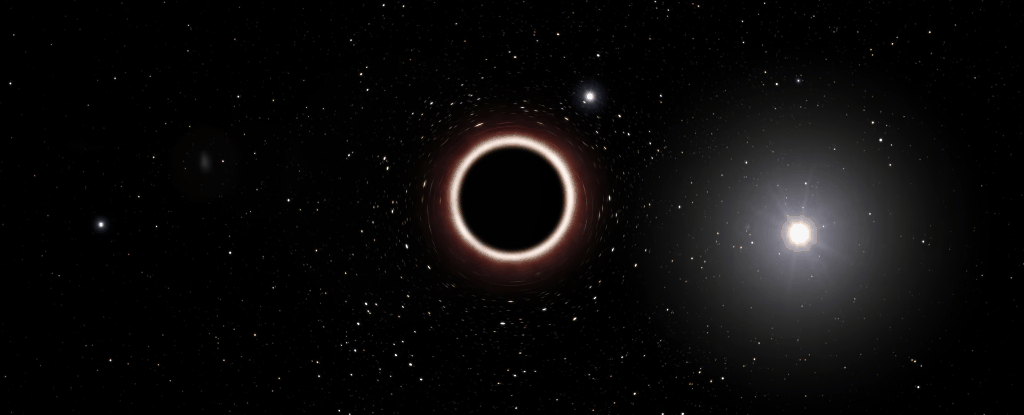Blog
Need for Speed
13 August 2020
 ESO/M. Parsa/L. Calçada
ESO/M. Parsa/L. CalçadaIn the center of our galaxy, hundreds of stars closely orbit a supermassive black hole. Most of these stars have large enough orbits that their motion is described by Newtonian gravity and Kepler’s laws of motion. But a few orbits so closely that their orbits can only be accurately described by Einstein’s theory of general relativity. The star with the smallest orbit is known as S62. Its closest approach to the black hole has it moving more than 8% of light speed.
 Florian Peißker, et al
Florian Peißker, et alOur galaxy’s supermassive black hole is known as Sagittarius A* (SgrA*). It a mass of about 4 million Suns, and we know this because of the stars that orbit it. For decades astronomers have tracked the motion of these stars. By calculating their orbits, we can determine the mass of SgrA*. In recent years our observations have become so precise that we can measure more than the black hole’s mass. We can test whether our understanding of black holes is accurate.
 ESO/M. Kornmesser
ESO/M. KornmesserThe most studied star orbiting SgrA* is known as S2. It is a bright, blue giant star that orbits the black hole every 16 years. In 2018, S2 made its closest approach to the black hole, giving us a chance to observe an effect of relativity known as gravitational redshift. If you toss a ball up into the air, it slows down as it rises. If you shine a beam of light into the sky, the light doesn’t slow down, but gravity does take away some of its energy. As a result, a beam of light becomes redshifted as it climbs out of a gravitational well. This effect has been observed in the lab, but S2 gave us a chance to see it in the real world. Sure enough, at the close approach, the light of S2 shifted to the red just as predicted.
For years S2 was thought to be the closest star to SgrA*, but then S62 was discovered. As a team recently discovered, it’s a star about twice as massive as the Sun that orbits the black hole every ten years.1 By their calculations, at the closest approach, it’s speed approaches 8% of the speed of light. That’s so fast that time dilation comes into play. An hour at S62 would last about 100 Earth minutes.
Because of its proximity to SgrA*, S62 doesn’t follow a Keplerian orbit. Rather than being a simply ellipse, it follows a spirograph motion where its orbit precesses about 10° with each cycle. This kind of relativistic precession was first observed with the orbit of Mercury, but only as a small effect.
In the Fall of 2022, S62 will make another close approach to SgrA*. It should allow astronomers to test the effects of relativity even more precisely than the close approach of S2.
Peißker, Florian, Andreas Eckart, and Marzieh Parsa. “S62 on a 9.9 yr Orbit around SgrA.” The Astrophysical Journal 889.1 (2020): 61. ↩︎